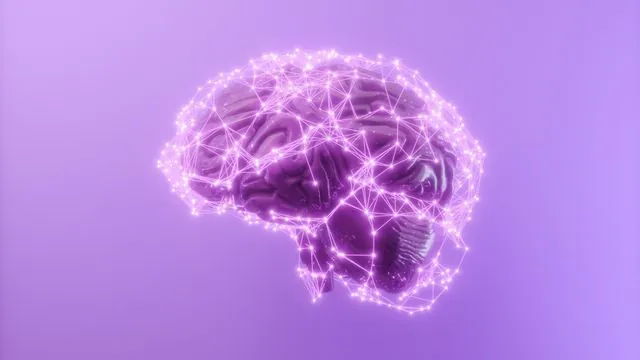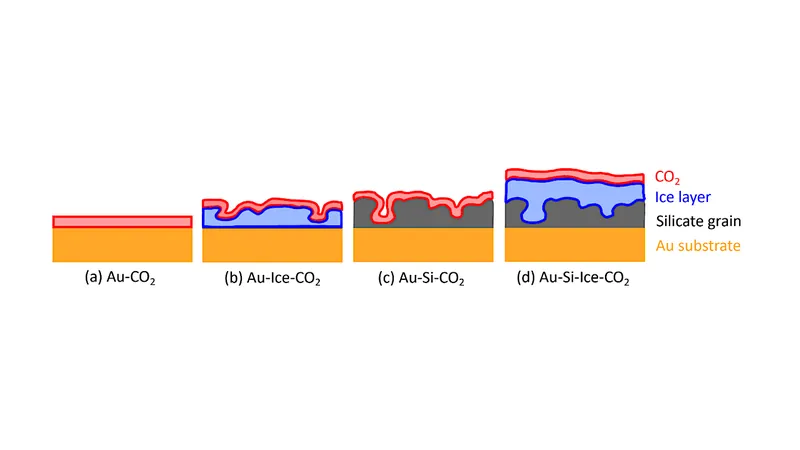
Unlocking the Brain's Future: How Dopamine Neurons Shape Our Decisions
2025-06-06
Author: Mei
A Revolutionary Discovery in Brain Functionality
What if your brain could provide a roadmap for possible futures, not just a map of familiar places? Researchers at the Champalimaud Foundation are pioneering this concept by exploring how specific populations of dopamine neurons do more than just track rewards—they project maps that predict when rewards will arrive and their potential sizes. These maps dynamically adjust based on context, shedding light on why some people act impulsively while others hold back. Remarkably, this biological mechanism parallels recent advances in artificial intelligence (AI), posing exciting prospects for enhancing machine learning.
The Complexity of Decision-Making
Imagine this scenario: you’re torn between waiting in line for your favorite restaurant dish or grabbing a quick bite nearby. Your brain doesn’t just evaluate the taste of the meal; it considers wait times, too.
For decades, scientists have been unraveling how our brains make such choices using 'reinforcement learning' models. These models, however, often oversimplify real decision-making by collapsing future rewards into a single average value, which can overlook crucial details like timing and quantity.
Shattering Old Models
In an exciting study recently published in Nature, researchers at the Champalimaud Foundation challenged the traditional view of decision-making in the brain. They found that our brain operates on a much richer array of predictions about future rewards rather than a single estimate. Instead of just averaging possible outcomes, diverse dopamine neurons work together to create a probabilistic map that guides adaptive behaviors amidst change.
The Experiment: Smell, Wait, and Learn
To put this theory to the test, the team created a behavioral experiment with mice. By presenting these animals with specific scent cues that signaled rewards of varying sizes and delays, the research team could observe the differing responses of dopamine neurons to potential rewards.
The results were eye-opening: some neurons favored immediate rewards, while others reacted more strongly to delayed ones. This diversity revealed that the brain does not merely calculate the likelihood of rewards, but creates a coordinate system for when and how large those rewards might be.
The Advisors in Our Heads
The study found that the collective output of dopamine neurons could predict anticipatory actions in the mice. When the environment changed, these neurons evolved their responses based on the context, maintaining a steady structure while still adapting—much like having advisors with different risk assessments. Some pushed for immediate action, while others provided caution, enabling the brain to navigate its options better.
Beyond the Present: Planning for Tomorrow
This neural coding doesn’t just facilitate behavior based on past experiences; it empowers forward-thinking. Simulations revealed that agents utilizing the dopamine-encoded maps made smarter decisions, particularly in shifting scenarios that relied on internal needs, like hunger.
The Cookie Dilemma: Impulsivity Unpacked
For the first time, the study showcases multidimensional dopamine activity right at the cue, long before the rewards manifest. This innovative approach allows us to understand impulsivity better, raising questions about individual differences in dopamine-based predictions of the future. Could this insight be harnessed to help people manage impulsive tendencies?
The Future: Merging Neuroscience with AI
As neuroscience and AI increasingly inform one another, these findings suggest that the brain may have already discovered methods for effective learning that AI is just beginning to explore. Integrating neural-inspired architectures that capture the full scope of future predictions—including their timing and size—could mark a significant leap in creating machines that reason more like humans.
This research is not just a peek into the brain's ability to foresee the future; it presents a flexible blueprint of possibilities that not only helps us learn from what's happened before but also equips us to navigate the uncertainties that lie ahead—an invaluable skill, especially when weighing whether to jump into that long line for your favorite meal.


 Brasil (PT)
Brasil (PT)
 Canada (EN)
Canada (EN)
 Chile (ES)
Chile (ES)
 Česko (CS)
Česko (CS)
 대한민국 (KO)
대한민국 (KO)
 España (ES)
España (ES)
 France (FR)
France (FR)
 Hong Kong (EN)
Hong Kong (EN)
 Italia (IT)
Italia (IT)
 日本 (JA)
日本 (JA)
 Magyarország (HU)
Magyarország (HU)
 Norge (NO)
Norge (NO)
 Polska (PL)
Polska (PL)
 Schweiz (DE)
Schweiz (DE)
 Singapore (EN)
Singapore (EN)
 Sverige (SV)
Sverige (SV)
 Suomi (FI)
Suomi (FI)
 Türkiye (TR)
Türkiye (TR)
 الإمارات العربية المتحدة (AR)
الإمارات العربية المتحدة (AR)